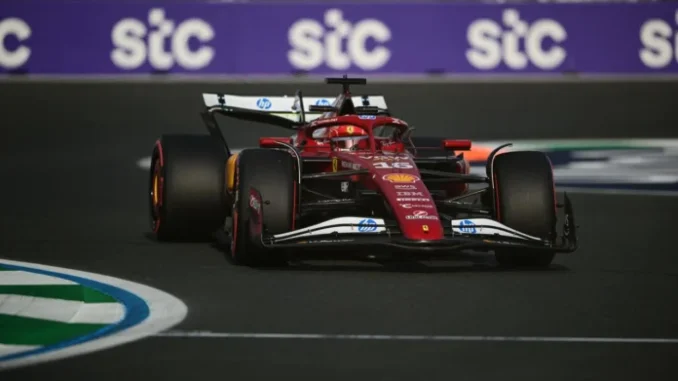
Ferrari is working to get back to the top. There are several issues that are currently holding back the Reds, still at least three tenths away from the super McLaren. Even Red Bull, when it finds the right working point of the car, is superior and Mercedes, at least with Russell, has often been in front. Starting behind does not help the Italian team, which is unable to maximize the performance of the SF-25 in qualifying. But let’s go in order.
The SF-25 doesn’t like turbulent contrails
It is no secret that this generation of cars has completely failed on the overtaking front . It is all the fault of the current regulations, incapable of taking into account this important and decisive factor. A single-seater that follows another opponent, in fact, automatically suffers a disadvantage deriving from the dirty air of the car in front. All because of the very complex aerodynamics of the wing cars.
The F1 cars that take to the track regulated by the regulatory body are very delicate and sensitive to the flow that hits them. We have seen how McLaren itself suffers from these conditions, which are highly complicated to simulate in the design phase. With the tools that are used inside the factories, such as when using CFD, you can simulate the effects of two single-seaters chasing each other.

However, as several technicians explained to us, it is difficult to hypothesize with extreme precision the slipstream that a McLaren produces rather than a Red Bull. The same goes for the rest of the teams. This is why, over a distance of 300 kilometers, it becomes so difficult to plug this type of disadvantage if you start from behind. A situation that the historic Italian team is experiencing massively.
Charles’s clarification
In the Jeddah Grand Prix, we will remember how Leclerc underlined this aspect: the SF-25 struggles to follow other cars and often has to gain a gap. The Reds themselves suffer from a chronic lack of rotation . Hamilton especially complains about it, as he would like a strong front end when entering, but even the Monegasque driver himself is not immune, as the understeer is too accentuated in certain circumstances.
After the race, Leclerc revealed how difficult it was to stay behind Russell: “ To be honest, I was struggling a lot with the balance when I was behind George. I was suffering from a lack of rotation. As soon as Mercedes stopped, the front tyres came alive and the car immediately improved. I could manage the front axle better and the performance improved in clean air. ”

These words leave little room for interpretation. The SF-25’s understeer was too great in dirty air conditions. The amount of fluid mass hitting the front wing drops by a percentage and automatically reduces the load by a few points . Conditions that put the front axle of the Rossa in even more difficulty, constituting the main limitation in the first part of the stint in Saudi Arabia.
Ferrari, the importance of starting from the front
It is no coincidence that Jeddah is a front-limited circuit. A condition that everyone was subjected to in dirty air but that the Reds suffered more . One of the causes concerns the flexibility of the front wing. Turbulence causes oscillations that interfere with this component, subject to a less constant load. This unexpected fluctuation, in certain areas, such as in fast corners, takes away feeling from the driver.
In clean air these problems do not exist, as Charles claims, who had a better “chemistry” with the car and a greater amount of load to exploit on the front axle. We are not talking about a problem related to the temperature of the tires, which can rise when following another car. The problem is purely aerodynamic , where a basic understeering car is more affected by these factors.

To avoid this scenario, it is necessary to improve in qualifying. We talked about it this morning, where in this case the tires are very much involved. The Italian team is unable to manage the two different types of temperatures at best , where the surface and internal ones are essentially in disagreement. A problem that the Prancing Horse is working on with the updates from Imola.

Leave a Reply